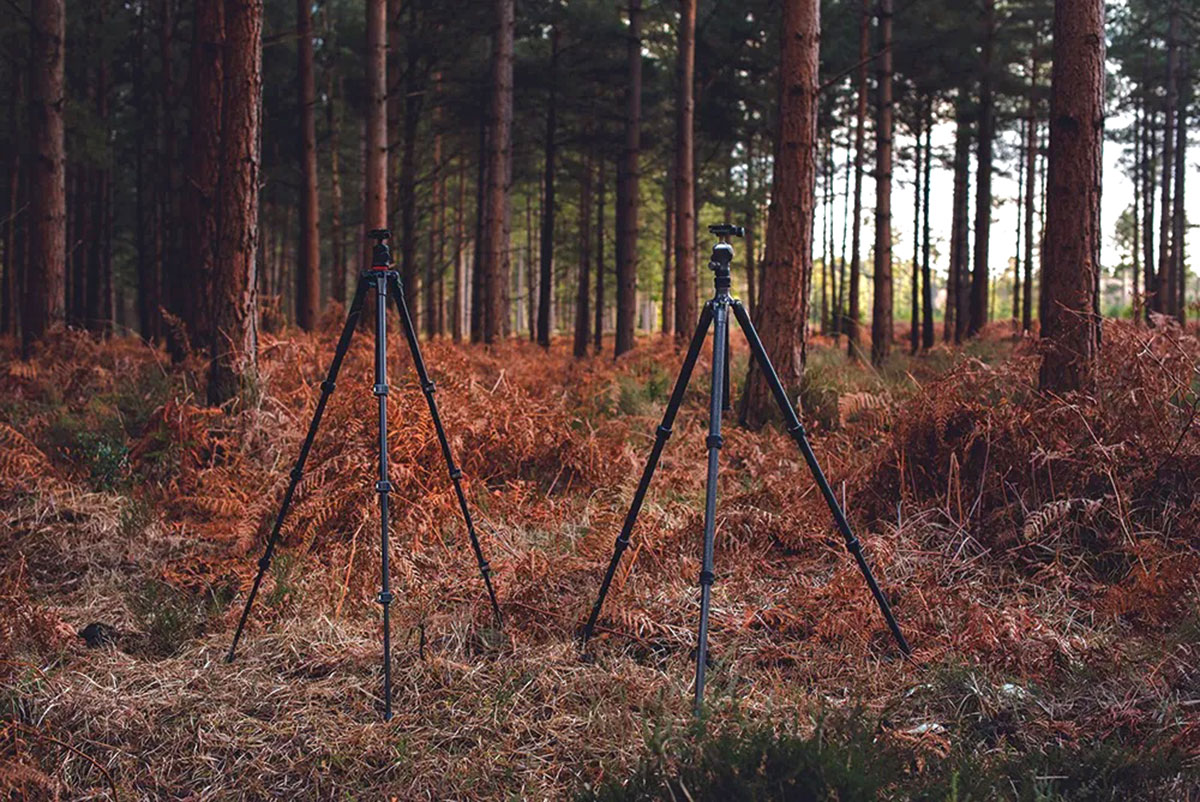When it comes to choosing a tripod for wildlife and landscape photography, one of the big decisions you’ll face is whether to go for an aluminum or carbon fiber model. Both materials have their unique advantages, and understanding these can help you make the right choice based on your specific needs, budget, and shooting style. Let’s break down the key differences and benefits of each.
Aluminum Tripods: The Reliable Workhorse
Aluminum tripods have been a staple for photographers for years, and they continue to be a popular choice for good reasons:
Affordability: One of the biggest advantages of aluminum tripods is their cost. They are generally much more affordable than their carbon fiber counterparts, making them a great option for photographers who are just starting out or those on a budget. You can get a solid, reliable aluminum tripod without breaking the bank.
Durability and Sturdiness: Aluminum is a strong and durable material. Aluminum tripods are often slightly heavier, which can be a good thing when it comes to stability, especially in windy conditions or when using heavy camera setups. The extra weight can help keep your gear steady and secure, minimizing vibrations.
Resistance to Dents and Impact: While aluminum tripods are not immune to damage, they tend to handle impacts better than carbon fiber. If you’re the type of photographer who’s rough on gear or shoots in rugged environments where bumps and bangs are common, an aluminum tripod might be more forgiving.
Stability in Extreme Temperatures: Aluminum tripods tend to perform consistently across a range of temperatures. Unlike some materials that can become brittle in extreme cold or excessively hot, aluminum maintains its structural integrity, which is particularly useful for wildlife photographers who shoot in diverse environments.
Carbon Fiber Tripods: The Lightweight Champion
Carbon fiber tripods, on the other hand, have quickly gained popularity among serious hobbyists and professionals due to their lightweight construction and advanced features:
Lightweight and Portable: Carbon fiber tripods are significantly lighter than aluminum ones, making them ideal for photographers who frequently hike long distances or travel to remote locations. When you’re trekking through the wilderness or climbing steep trails to capture that perfect landscape, every pound counts. A lighter tripod is easier to carry, reducing fatigue and allowing you to focus more on your photography.
Superior Vibration Dampening: One of the standout benefits of carbon fiber tripods is their excellent vibration dampening ability. Carbon fiber naturally absorbs vibrations better than aluminum, meaning sharper images, especially when shooting with long lenses or in windy conditions. This can be particularly beneficial for wildlife photographers who need to capture sharp images of distant subjects without camera shake.
Strength-to-Weight Ratio: Despite being lighter, carbon fiber tripods are incredibly strong. The strength-to-weight ratio is higher in carbon fiber than in aluminum, which means you’re getting maximum sturdiness with minimal weight. This is a huge advantage when you’re packing a lot of gear and want to keep your load as light as possible without sacrificing stability.
Corrosion Resistance: Carbon fiber is highly resistant to corrosion, unlike aluminum which can corrode over time, especially when exposed to saltwater or humid environments. This makes carbon fiber tripods an excellent choice for landscape photographers who frequently shoot in coastal areas or humid climates.
Long-Term Investment: While carbon fiber tripods come with a higher price tag, they are often seen as a long-term investment. Their durability, lightweight nature, and ability to withstand harsh conditions mean that you may not need to replace them as often, potentially saving money in the long run.
Which One is Right for You?
Ultimately, the choice between an aluminum and carbon fiber tripod comes down to your specific needs and shooting style:
Go for an Aluminum Tripod if: You are looking for a cost-effective option that provides reliable stability, especially if you don’t mind carrying a bit more weight. It’s a great choice for photographers who primarily shoot in relatively accessible locations or who want a tough tripod that can take a bit of a beating.
Opt for a Carbon Fiber Tripod if: You prioritize lightweight gear for long hikes or travel and are looking for superior vibration dampening for sharper images. If you shoot in environments that are tough on gear—like salty coastal areas, humid jungles, or freezing mountain tops—carbon fiber is likely the better choice.
The Bottom Line: Balancing Your Priorities
Both aluminum and carbon fiber tripods have their advantages, and what’s right for one photographer might not be the best choice for another. If budget allows, carbon fiber offers some compelling benefits that can make your wildlife and landscape photography experience more enjoyable and productive. However, if you’re looking to maximize stability on a tighter budget or need a rugged workhorse, an aluminum tripod is still a fantastic option. Whichever material you choose, investing in a quality tripod that suits your needs will pay dividends in the form of better photos and a more enjoyable shooting experience.


